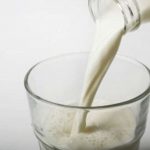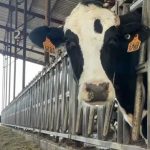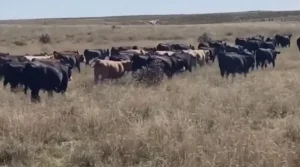
Video Transcript
DAVE BRIGGS: Americans have been feeling the pinch of high inflation at the grocery store over the past year, in particular, when it comes to dairy products. The latest CPI data revealing the prices of household staples, like eggs, butter, and milk, have risen significantly over that span. The eggs number is baffling, folks. We’re talking about 60% year over year, 11% in the last month. But what does it mean for today’s farmers?
Joining us now to help answer that question is Patrick Criteser, Tillamook CEO. I know I called you Tillamook ice cream because in my house, sir, you make a lot of stuff. We are devoted Tillamook ice cream fans. My kids didn’t even know you made other stuff. Mint chocolate chip, by the way, is the go-to. If you could tell us how those prices of daily product– dairy products are impacting your business and your farmers, who you call your bosses.
PATRICK CRITESER: Yeah. Well, there’s certainly been a lot of talk about the inflation at the shelf and food prices. And there should be because that’s an 8% to 12%, even higher in some categories, increase in costs year over year is impacting families. But it’s also important to remember what the current economic conditions are doing for– the impact that they’re having on the nation’s farmers. Input costs at the farm level are up substantially. Weather conditions have been challenging. On top of that, farmers are price takers, not price setters.
So this cycle of cost increases and then price increases, it sort of rolls through other supply chains. It kind of gets stopped at the farm level in the food supply chain, to the extent that farmers are having to bear the impact of high input costs without the ability to necessarily pass on higher prices. And as a result of that, many farmers across various sectors and regions in the West are faced with a choice about eating into sometimes multigenerational equity on multiple years of losses, just to keep the farm operating.
SEANA SMITH: And Patrick, when you talk about those supply chains, some of the issues, the weather, more specifically, really, what we’ve seen over the last week or so, with the weather out west– you’re based in Oregon, but the massive floods that we have seen throughout the state of California– how big of an impact has that had or will potentially have on your business?
PATRICK CRITESER: Yeah, it certainly will. I mean, you know, obviously, weather conditions have a big impact on farming and the environment within which farming is taking place. Just a month or so ago, we had in a 10-day period, we had an ice storm, and then a wind storm that caused power outages. And we’re moving generators all around to different farms and trying to keep farms operating. And those same kinds of challenges are what farmers in California are experiencing today.
The variability in climate, whether it be the spring we had here in the West, which was not very conducive to growing crops and resulted in feed scarcity, as well as low protein in some feeds, as well as drought that they’ve experienced in California, those things just continue to create a high degree of variability in farming conditions across the nation.
DAVE BRIGGS: Despite the many challenges we’ve just laid out, Patrick, boy, it seems like on the surface, Tillamook is having its moment. You’ve been around 113 years, and yet, I’ve never seen more, I’ve never heard of it more. And again, I’m focusing on the ice cream. What are the business lessons that you’ve learned over this past trying couple of years? And why do you think you’ve emerged in this moment?
PATRICK CRITESER: Yeah, well, as we entered the pandemic in 2020, we were in a phase of national expansion. We had long been, for over 100 years, been a very beloved, regional brand. And we had begun to move product around the west and then, increasingly, into the rest of the country. And the pandemic hit, and one of the things that my team and I did is we sort of circled the wagons and said, we’re part of the system that feeds the nation. We need to take that seriously. What are the things that could shut us down?
And we did a lot of contingency planning. And we leaned into our obligation to help feed the nation with great tasting ice cream and cheese and cream cheese and other great products. And so we built inventory. We worked around the clock to supply products to retailers around the country. And as a result of that, we were given the opportunity to expand the business pretty substantially during that time. And we continued to take that obligation seriously in the years where we’ve certainly subsequently faced supply chain disruption and then high inflation, high interest rate environment.
And so, certainly, leaning into our business model, understanding the clarity– with clarity where we fit as an everyday premium product that people enjoy in their homes has been very important learnings in these last couple of years.
DAVE BRIGGS: Yeah, it’s not just a COVID food that you crave when you’re home, but it’s probably recession proof. Quick question– favorite flavor? I know it’s like picking a favorite kid. Got to give me one.
PATRICK CRITESER: Well, I have to admit that I’ve eaten chocolate peanut butter ice cream just about every night for about 35 years. So I’ll admit I like what I like.
DAVE BRIGGS: I like that you admitted that. Mint chocolate chip in my house. Tillamook CEO Patrick Criteser, great to have you, sir. Appreciate the time. Enjoy the weekend.
PATRICK CRITESER: Thanks for having me.























